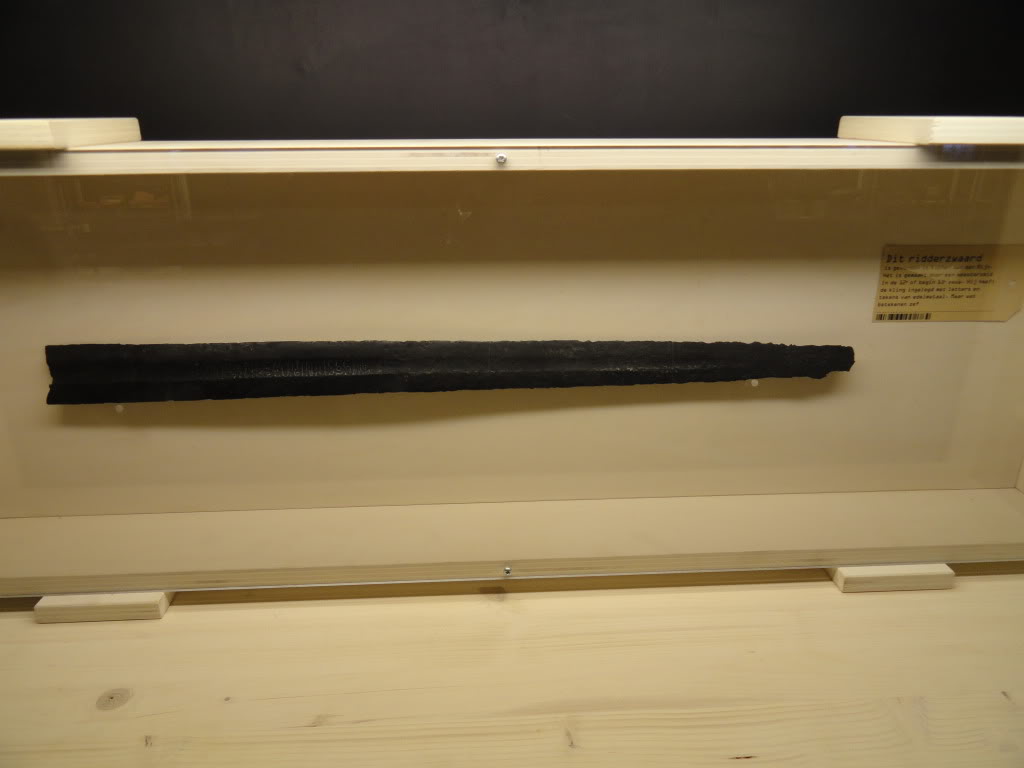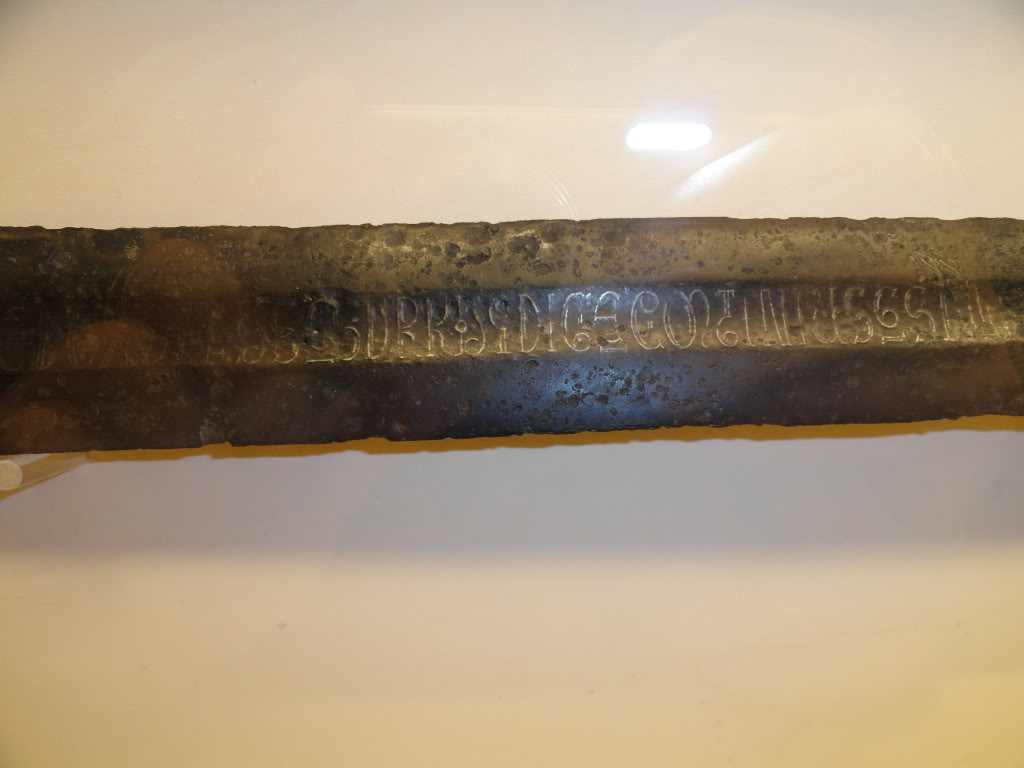Ken,
If you look in
Records of the Medieval Sword, there are several swords with inscriptions beginning with a cross potent like this one, and a benediction of some sort. Examples can be found in the inscription on page 39, XI.3 on page 55, and XI.9 on page 62. Oakshotte dates all of these swords between 1050-1120, although Peter Johnsson believes that XI.3 has a bit of a later date, closer to circa 1200, which is the date most arms curators would assign to XI.3.
The article from
Geibig mentions that swords with a "non-ferrous cross-potent" like this one date from the mid 11th to early 13th century. It also mentions that long invocations tend to come from the end of the 12th and into the 13th C.
I'm wondering, in the case of this sword, if the text might actually be "BENEDICE", with the "BENED" being seperated from the "ICE" by a series of interrupting characters. Or perhaps not- I may have transcribed the text inaccurately and there might be another word beginning with "BENED" here. One of the things that makes me think the "BENED" is indeed interrupted, or at least abbreviated, is the fact that these characters are immediately followed by the sequence "OXO", which sometimes appears on other swords. I do not think it's certain that "OXO" has a meaning- it could be merely a series of symbols believed to have religious power and potency, like some of the characters and phrases found in medieval magical invocations.
At any rate, until someone comes along who is better informed than us, we will probably remain ignorant.










